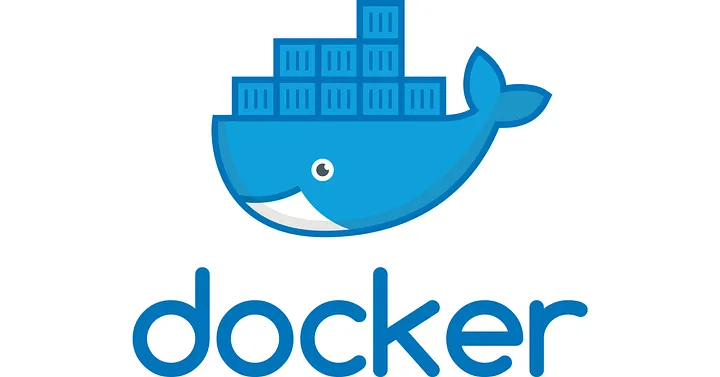Day 16 - Docker for DevOps Engineers.
 Rahul Gupta
Rahul GuptaTable of contents
- Introduction
- What is Docker?
- The Rise of Containerization
- Key Benefits of Docker
- Getting Started with Docker
- Real-World Use Cases
- Task 1: Running a Docker Container
- Task 2: Inspecting a Docker Container
- Task 3: Listing Port Mappings
- Task 4: Viewing Resource Usage Statistics
- Task 5: Viewing Processes in a Container
- Task 6: Saving an Image to a Tar Archive
- Task 7: Loading an Image from a Tar Archive
- Conclusion

Introduction
In the fast-paced world of software development, efficiency and scalability are paramount. Enter Docker, a platform that has revolutionized how we think about application deployment. Whether you're a seasoned developer or a tech enthusiast just getting started, understanding Docker is essential. In this blog, we'll explore what Docker is, why it's so transformative, and how you can start using it today.
What is Docker?
Docker is an open-source platform that enables developers to automate the deployment, scaling, and management of applications. It uses containerization technology to package an application and its dependencies into a "container," ensuring that it runs smoothly in any environment, from a developer's laptop to a production server.
The Rise of Containerization
Before Docker, developers faced significant challenges in maintaining consistency across various environments. The phrase "It works on my machine!" was all too common, highlighting the discrepancies between development, testing, and production environments. Containers solved this problem by creating a consistent, isolated environment for applications.
Containers are lightweight, efficient, and portable, making them ideal for modern microservices architectures. Unlike virtual machines, which include an entire operating system, containers share the host system's kernel, significantly reducing overhead and improving performance.
Key Benefits of Docker
Consistency Across Environments: Docker ensures that your application behaves the same way regardless of where it is deployed. This eliminates the "works on my machine" problem and makes collaboration easier.
Isolation: Each container runs in its own isolated environment, which means that one application’s dependencies won’t interfere with another's. This isolation also enhances security.
Scalability: Docker makes it simple to scale applications up or down. With orchestration tools like Kubernetes, you can manage thousands of containers in a highly efficient manner.
Speed: Docker containers are lightweight and start up quickly compared to traditional virtual machines, improving development and deployment times.
Portability: Containers can run on any system that supports Docker, including different operating systems and cloud platforms. This makes migrating applications between environments straightforward.
Getting Started with Docker
Starting with Docker is easier than you might think. Here are the basic steps:
Install Docker: Docker can be installed on various operating systems, including Windows, macOS, and Linux. Visit the official Docker website to download and install Docker Desktop for your OS.
Understand Docker Components:
Docker Engine: The core of Docker, which creates and runs containers.
Docker Images: Immutable snapshots of a container that include the application and its dependencies.
Docker Containers: Running instances of Docker images.
Docker Hub: A cloud-based registry where you can find and share Docker images.
Create a Dockerfile: A Dockerfile is a script containing instructions on how to build a Docker image. Here’s a simple example for a Node.js application:
# Use an official Node.js runtime as a parent image FROM node:14 # Set the working directory WORKDIR /app # Copy the current directory contents into the container at /app COPY . /app # Install any needed packages specified in package.json RUN npm install # Make port 8080 available to the world outside this container EXPOSE 8080 # Run the app when the container launches CMD ["node", "app.js"]Build and Run Your Container:
Build the Docker image:
docker build -t my-node-app .Run the container:
docker run -p 8080:8080 my-node-app
Explore Docker Hub: You can find pre-built images for a wide variety of applications on Docker Hub, which can save time and effort. For example, you can pull an image for PostgreSQL or Redis and integrate it into your application stack.
Real-World Use Cases
Microservices Architecture: Docker is ideal for microservices, where each service can run in its own container, simplifying development and deployment.
Continuous Integration/Continuous Deployment (CI/CD): Docker can automate testing and deployment, making it easier to integrate changes and deploy them rapidly.
Development Environments: Developers can create consistent development environments, avoiding issues related to different setups on different machines.
Task 1: Running a Docker Container
To begin, we'll run a simple Docker container to ensure everything is set up correctly.
docker run hello-world
The docker run hello-world command downloads the hello-world image from Docker Hub (if not already present) and starts a new container that runs a test to check if Docker is installed correctly. Upon successful execution, you should see a message indicating that your installation is working correctly.
Task 2: Inspecting a Docker Container
Next, we'll use the docker inspect command to view detailed information about a container. This command provides extensive metadata about the container, including its configuration and state.
docker inspect <container_id>
Replace <container_id> with the actual ID or name of the container you want to inspect. This will output a JSON object containing various details such as network settings, volume mounts, environment variables, and more.
Task 3: Listing Port Mappings
To check which ports a container is mapping, use the docker port command. This is particularly useful when you need to know how the container’s ports are exposed on the host machine.
docker port <container_id>
Replace <container_id> with the ID or name of your container. The command will list the port mappings, showing which ports on the container are connected to which ports on the host.
Task 4: Viewing Resource Usage Statistics
Monitoring the resource usage of your containers is crucial for performance tuning and resource management. The docker stats command provides real-time statistics on CPU, memory usage, and more for all running containers.
docker stats
Executing this command without any arguments will display stats for all active containers. You can also specify a container ID or name to view stats for a particular container.
Task 5: Viewing Processes in a Container
To see what processes are running inside a container, use the docker top command. This can help diagnose issues within a container by showing the active processes.
docker top <container_id>
This command outputs a list of processes similar to the top command in Linux, including information like process IDs, user, CPU usage, and memory usage.
Task 6: Saving an Image to a Tar Archive
The docker save command allows you to save a Docker image to a tar archive. This is useful for transferring images between systems or for backup purposes.
docker save -o <path_to_tar_archive> <image_name>
Replace <path_to_tar_archive> with the path where you want to save the tar file and <image_name> with the name of the image you want to save. This command will create a tarball containing the image.
Task 7: Loading an Image from a Tar Archive
To load a Docker image from a tar archive, use the docker load command. This is typically done to restore an image from a backup or to load an image received from another system.
docker load -i <path_to_tar_archive>
Replace <path_to_tar_archive> with the path to the tar file you want to load. This will load the image into your local Docker registry.
Conclusion
Mastering these Docker commands will significantly enhance your efficiency as a DevOps engineer. They provide essential functionalities for managing, inspecting, and monitoring Docker containers and images. By integrating these commands into your daily workflow, you'll be better equipped to handle various Docker-related tasks with confidence and precision. Happy Dockering!
Thank you for reading our DevOps blog post. We hope you found it informative and helpful. If you have any questions or feedback, please don't hesitate to contact us.
I hope this helps!
Happy Learning✨
Subscribe to my newsletter
Read articles from Rahul Gupta directly inside your inbox. Subscribe to the newsletter, and don't miss out.
Written by

Rahul Gupta
Rahul Gupta
Hey there! 👋 I'm Rahul Gupta, a DevOps Engineer passionate about all things AWS DevOps Technology. Currently, on a learning adventure, I'm here to share my journey and Blogs in the world of cloud and DevOps. 🛠️ My focus? Making sense of AWS services, improving CI/CD, and diving into infrastructure as code. Whether you're fellow interns or curious enthusiasts, let's grow together in the vibrant DevOps space. 🌐 Connect with me for friendly chats, shared experiences, and learning moments. Here's to embracing the learning curve and thriving in the exciting world of AWS DevOps Technology!